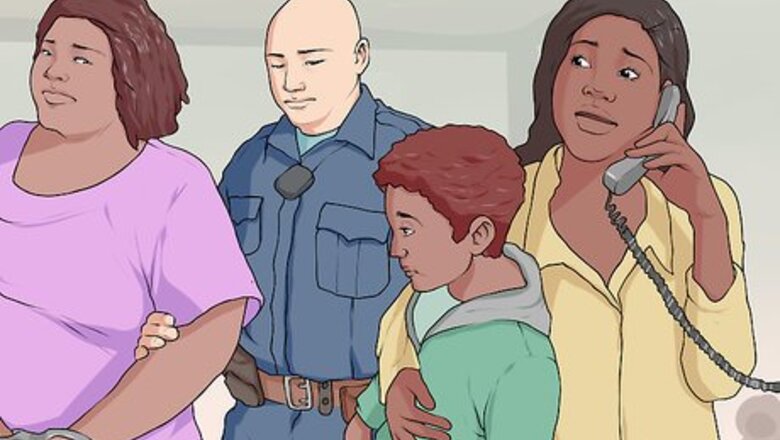
views
Applying for Legal Guardianship

Contact Child Protective Services (CPS). As soon as the parents are arrested, you should volunteer to watch the children. They may have been taken into custody by the police and then turned over to CPS. Contact the CPS where the children live. Tell them you are a family member or close friend and that you will watch the children. CPS will probably perform an emergency assessment. This will consist of doing a criminal background check on you and verifying your relationship to the child. A CPS caseworker will probably also visit your home to see that it is safe. CPS has a strong preference for relatives or close family friends watching the children. If no one steps forward, the children will become a ward of the court and probably placed in foster care.
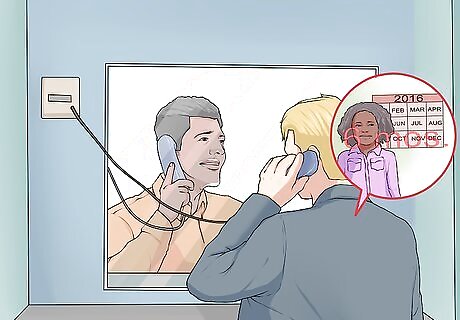
Talk with the parents. Ask them if you can serve as legal guardian for their children. When parents are imprisoned, you can become a legal guardian for the amount of time that the parents are in jail. By becoming a guardian, you do not terminate their parental rights. When at least one parent is released from prison, then he or she can regain custody of the children. The process for becoming a legal guardian is much easier when the parents agree that you should be the guardian. You might be trying to get custody without the parents’ consent. That is very difficult and will likely result in a contested guardianship hearing. There may also be a contested hearing if two or more people want to become the guardian.

Identify if you need to be a permanent or temporary guardian. A temporary guardianship lasts for a limited amount of time. A permanent guardianship lasts until terminated by the court. A permanent guardianship could be terminated, for example, because the child reaches adulthood. Check how long each parent is in prison for. If the child is six years old and one parent is serving a six-month prison term, then you could apply for temporary guardianship. Some states place limits on how long a temporary guardianship can be. In some states it might be six months, while in others it might only be 60 days. You should check with a lawyer to find the out the limit in your state.

Check if you are eligible to serve as a guardian. You do not need to be a relative to become a legal guardian for a child. However, you need to demonstrate to a court that you are sufficiently responsible to care for the child. Your state law might deem you ineligible if any of the following applies to you: You lack sufficient education to provide care for the child. You are inexperienced at providing care for children. You have a history of bad conduct, such as a criminal record for violence or dishonesty. You owe the child money. You are a minor yourself.
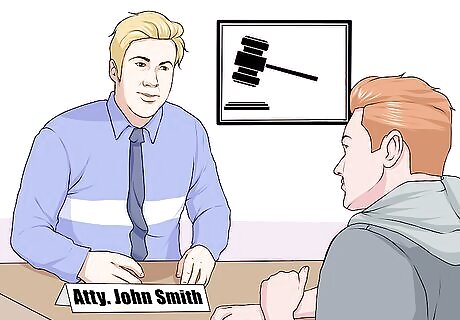
Meet with a lawyer. Each state’s guardianship laws differ. In some states, you won’t need to file documents with the court in order to get a temporary guardianship. Instead, the parents can complete a Temporary Guardianship Agreement. You should meet with a qualified family law attorney to discuss your specific requirements. You can find a family law attorney by contacting your state’s bar association, which should run a referral program. You can also get a referral from any other lawyer you might have used in the past. For example, you might have had a lawyer close a real estate deal. Ask this lawyer if they could recommend a family law attorney. Once you have the name of a lawyer, call and ask to schedule a consultation.

Hire the lawyer in a contested case. If the parents are fighting your attempt to become a guardian, or if another relative wants to be the guardian, then you should hire a lawyer. Parents generally can get free legal help, so you will be at a disadvantage if you don’t have a lawyer. When you meet for a lawyer for your consultation, ask him or her how much it would cost to represent you in a contested guardianship proceeding. Some lawyers bill by the hour, while others may be willing to charge you a flat fee. In some states, you might qualify for free or reduced-price legal help, especially if the child is already living with you.
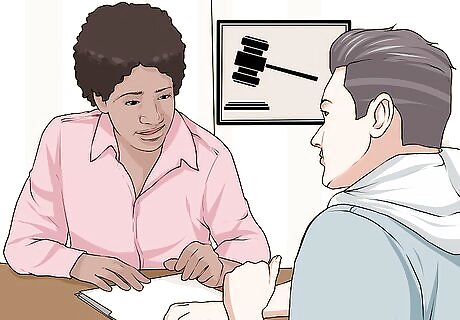
Get the necessary forms. You can get forms to complete from the court clerk. Go to the probate or family law court in the county where the children live and tell the clerk you want to apply for guardianship. The clerk should give you the necessary forms.

File the forms. Complete the forms neatly, using black ink or a typewriter. Then make several copies and take the forms to the court clerk. Ask to file the original. If you need the parents’ signature on any of the forms, then you should arrange to get the forms signed while they are in prison. Often, you can mail the forms to the prison or you could take them with you during a visit. You may have to pay a filing fee. If you can’t afford the fee, then ask for a fee waiver form and fill it out.

Send notice to other people. You may need to send notice that you have filed for guardianship to other people who might have an interest in the case. Your court clerk will tell you acceptable methods of serving notice, such as paying the sheriff to hand deliver a copy or using certified or restricted mail to mail a copy. The people you need to serve notice will differ by court, but you will typically have to notify the following people: the child, if he or she is sufficiently old that they need to give consent to the guardianship anyone who cared for the child in the period of time before you filed for guardianship anyone else as directed by the Probate Judge
Attending a Court Hearing to Become a Guardian
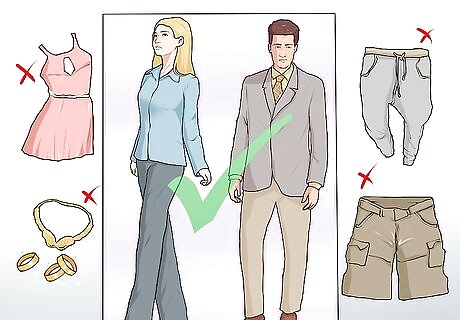
Dress appropriately. You want to make a good impression on the judge during your hearing, so you should dress your best. Courtrooms are conservative places, so you should dress in a manner that doesn’t draw negative attention to yourself. Men should wear long pants with a button-up dress shirt. Wear a solid or check-patterned tie and a sports coat if you have one. Avoid baggy pants or shorts. Women should wear a shirt or slacks coupled with a blouse. Make sure that clothing is not too tight, and don’t wear flashy or loud jewelry. See Dress for a Court Hearing for more information.

Arrive early. Be sure to give yourself enough time to find parking and go through security (if there is security at the courthouse). Turn off all cell phones and electronic devices before entering. Don’t bring food or beverages into court. Instead, consume everything outside the courthouse.

Answer the judge’s questions. If the parents agree that you should become the guardian, then the hearing will probably be uneventful. Regardless of what the parents want, the judge must still agree to the guardianship. Nevertheless, the judge will probably agree unless there is something in your application that suggests you aren’t fit to be a guardian. Be prepared to discuss anything in your application. If you were convicted of a crime, be prepared to discuss how you are now responsible. Talk about your job and community activities, as well as how long you have had a clean criminal record.

Explain why guardianship is in the children’s best interests. In a contested guardianship case, you need to prove that the parents can’t take care of their children and that living with you will be in the children’s best interest. It is easy to prove that the parents can’t take care of their children if they are in jail. That issue shouldn’t be in dispute. However, if another family member steps forward to be the guardian, then you need to prove that you can provide better financial and emotional support for the children. Your lawyer will help you find and present relevant evidence, which could include evidence of your income, proof that you have enough space in your home, and witness testimony that you have a strong bond with the children. The parents’ preference will also be a critical factor the judge will consider. The judge will also consider the child’s preference, if he or she is old enough.
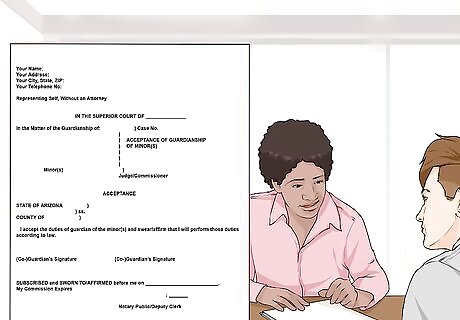
File your Acceptance of Guardianship. If the judge rules in your favor, then you will probably have to file a form with the court accepting the guardianship. Ask the court clerk for the appropriate form. The court will then need to issue you papers showing that you are the children’s guardian.
Adopting a Child
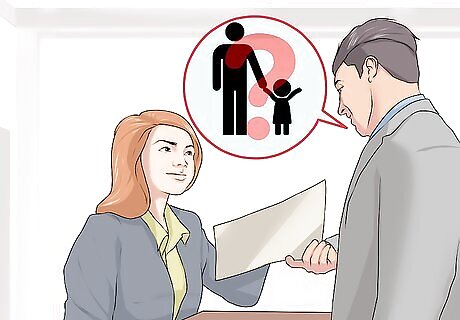
Find information about the adoptions process. Most adoptions conducted to gain custody of a child with an incarcerated parent are stepparent adoptions. If you qualify for a stepparent adoption, the process is often much simpler and quicker than if you had to adopt another way. If you are a stepparent, ask yourself the following questions. First, were you, as the stepparent, married to the birth parent at the time the child was born? Second, are you and the birth parent still married? If you can answer "yes" to both of these questions, you will only have to conduct an "adoption to confirm parentage." If this is the case, you will only have to file a few forms with the court and talk with the child about the adoption. If you have to answer "no" to either of these questions, you will have to go through the entire stepparent adoption process.
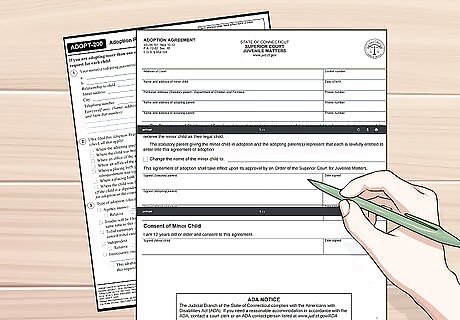
Fill out the required court forms. Regardless of your case status as a stepparent (i.e., whether you are filing for a confirmation of parentage or a stepparent adoption), you will have to fill out an adoption request, agreement, and order. If you are filing for a confirmation of parentage, you must also fill out a declaration. The adoption request form asks you to identify yourself and provide contact information, why the court has jurisdiction over your case, what type of adoption you are asking for (i.e., stepparent adoption), information about the child, information about the biological parents, why you qualify for a stepparent adoption, whether you have received the necessary consent of the biological parents, and why you are suitable to adopt (e.g., are you of a legal age, will you support the child, do you have a suitable home for the child). The adoption agreement form asks the incarcerated biological parent to sign and agree to the stepparent adoption. The adoption order will set out the judge's conclusions about your case. All you need to do is fill out your personal information. If you need to fill out the declaration, it will ask you affirm, under oath, that you meet the qualifications of the special type of adoption. If you answered "yes" to both of the threshold questions that allowed you to file for this type of adoption, you will simply affirm those answers.

File your court forms. Once you fill out all the required forms, you will need to make at least two copies of them. One copy will be yours to keep and the other copy will be served on the incarcerated parent. Take all of your forms, including the originals, to the county courthouse that has jurisdiction over your case and file them with the clerk of courts. The clerk of courts will explain the process to you and will ask you to pay a filing fee. If you cannot afford the filing fee, you can ask the court for a fee waiver. Once you pay the fee or it has been waived, your paperwork will be stamped as "filed" and you will take the two copies home with you. The originals will stay with the court.

Talk with the child about the adoption. If the child you are trying to adopt is 12 or older, he or she will have to consent to the adoption before the judge will sign off on it. If this is the case, the judge, and possibly social workers, could talk with your child to inquire about their willingness to have you as their parent. You can also have an honest discussion with them beforehand about this possibility. If the child is under the age of 12, you will not need their consent. If the child consents or is under the age of 12 and you qualify for an adoption to confirm parentage, your adoption will conclude here and you will be the legal parent of the child. If you do not qualify for an adoption to confirm parentage and the child consents or is under the age of 12, you will have to continue through the rest of the stepparent adoption process.

Serve your papers on the other parent. When you bring a case in court, you must notify the other party. You do this by serving the other party with a copy of the lawsuit. In the case of a stepparent adoption, you will need to serve the adoption request form on the incarcerated parent. To do this, you need to ask someone who is 18 or older and not related to the case to send a copy of the request form to the incarcerated parent. Once service has been successfully completed, your server will fill out a proof of service form and return it to you. You will need to file this form with the court to prove the other parent has been served.
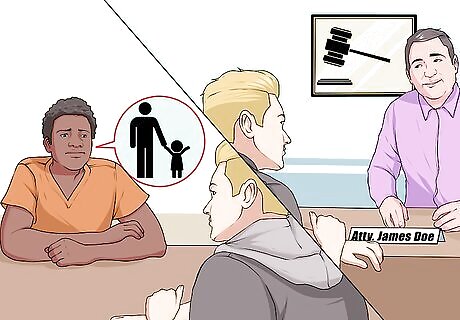
Get consent from the incarcerated parent. At this point, the incarcerated parent needs to consent to the adoption. If he or she does not, you will only be able to complete the adoption if the incarcerated parent is deemed to have abandoned the child or if the judge finds the adoption to be in the best interest of the child. If you cannot get consent, you should consider talking to an attorney. A contested adoption can be complex and an attorney can help you get the best outcome possible.

Allow an investigation. Before going to court your state will conduct an investigation into your ability to parent the child in question. The investigation will usually be handled by a court investigator, social worker, or family therapist. The investigator may interview you, your family, your friends, and your neighbors. In addition, the investigator might conduct home visits to check your dwelling and see how the child interacts in your home. Once the investigation is complete, the investigator will write a report and file it with the court. You will also get a copy.
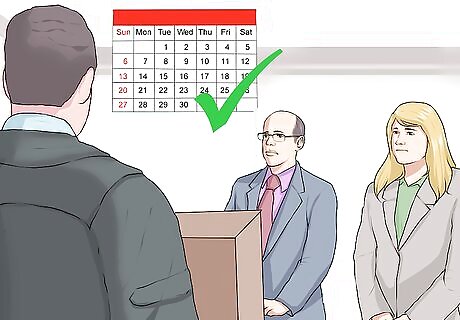
Go to your court hearing. Take all of the forms you have ever filled out and go to your scheduled hearing. The child must also attend the hearing. At the hearing the judge will ask you and the other parent questions about the possible adoption. Answer the questions honestly and professionally. When the judge completes his or her inquiry, they will make a decision about the adoption. If your adoption is granted, the judge will fill out the adoption order and you will file it with the court. At this point, you will be the parent of the child. If the judge denies the adoption, you might be able to appeal his or her decision. Check with an attorney about your options.
Understanding Other Options

Have the parents sign a Caregiver’s Authorization Affidavit. In some states, such as California, the parents can sign an affidavit. This affidavit allows qualified relatives to obtain medical care and enroll the children in school. It may last for only a limited amount of time, such as one year. Your state may not allow this option, but check with your lawyer to see if your state does. One advantage of this affidavit is that you do not need to get the courts involved. Instead, the parents sign the form and you can immediately begin taking care of the children. However, this affidavit does not grant you legal custody of the children. Also, you do not automatically become eligible for child welfare benefits.

Get a Power of Attorney. This is another option instead of seeking legal custody. The Power of Attorney gives you the power to secure medical care for the children and enroll them in school. Family members, as well as friends, can get a Power of Attorney. Depending on your state, immediate relatives may qualify for child welfare benefits with a Power of Attorney. There are many Power of Attorney forms you can find on the Internet. Find one for your state and fill it out. You can also ask your lawyer to help you draft one. A Power of Attorney must be notarized. This means the parents must sign in front of a notary public. You should coordinate with the parents. For example, you may need to visit the parents in jail with a notary public, or the parents could sign at a court hearing.
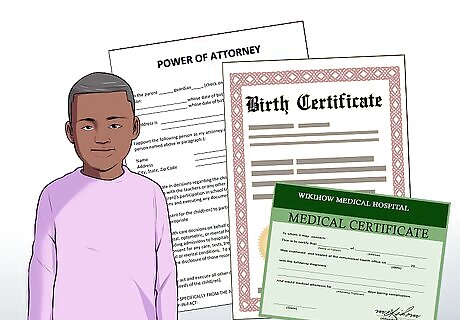
Get helpful records on the children. If you get a Power of Attorney or other authorization to care for a child, you should also get necessary records. These will help you get the child medical care or enrolled in school: The original copy of the Power of Attorney or other authorization. The child’s birth certificate. The child’s medical insurance card or Medicaid card.














Comments
0 comment